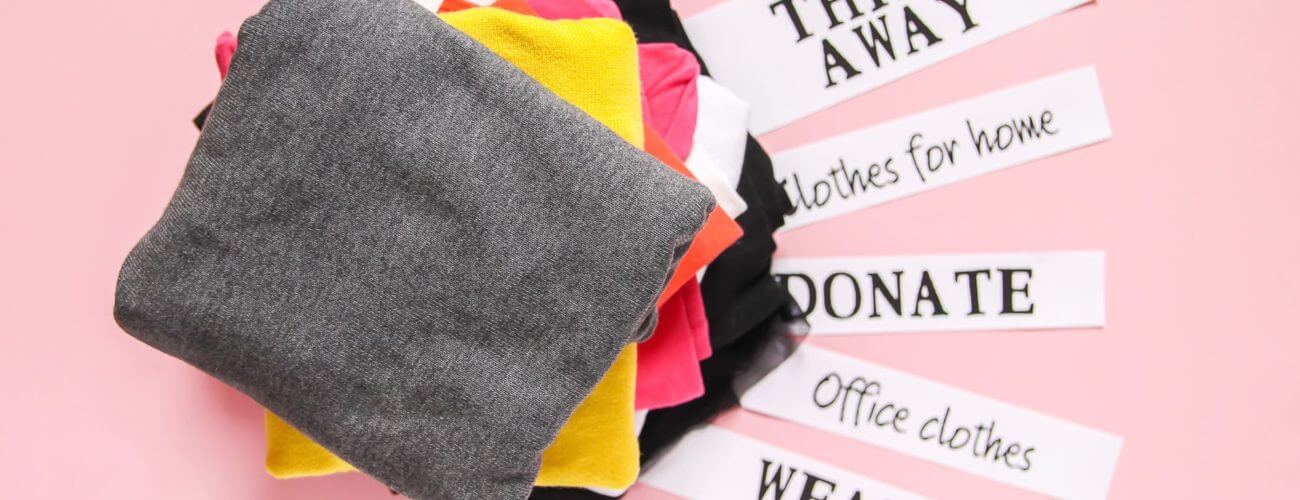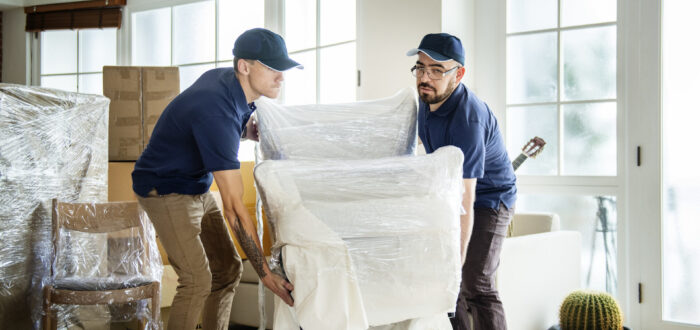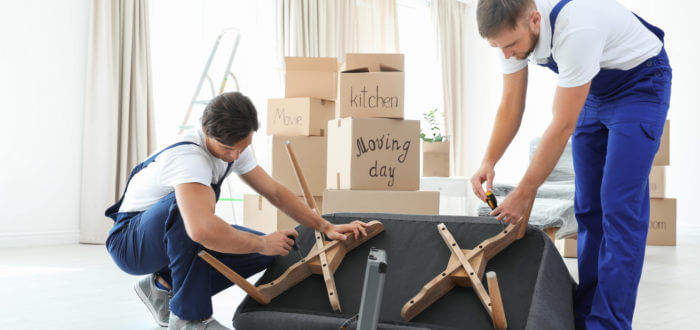

The (Almost) Complete List of What to Keep When Moving Cross Country
Posted in Moving Essentials,Moving Tips & Tricks,Planning the Move on March 29, 2021
Moving across the country comes with its challenges, and deciding how to declutter is one of them. Answering the question of what to keep when moving might be the hardest bit for most people since your whole life flashes before your eyes as you approach the time to say farewell to the old. Still, being sentimental doesn’t always pay off, which is why we prepared some expert tips to help you sail into the new with more vigor and less stress.
Deciding that you should chuck something out isn’t always easy. Still, it’s vital since if you give way to passion, you’ll end up obtaining more supplies and packing materials, going through the hassle of learning how to pack all of that, transporting, unpacking, plus cleaning in the new place. Sounds like great fun, right? Or you’ll pay more to professional cross country movers to do it all for you just to see that it doesn’t work and to throw it in the first couple of weeks. Still not convinced? To prevent the fake horror scenario, read on for our game-changing tips.
Decluttering Your Home – Tips for Rookies
If the day for moving cross country is approaching, things are probably starting to get crazy. If you’re getting cold feet or rethinking your reasons to move or having fights with your loved one as it can happen as relocating for love looms on the horizon, you probably can’t bring yourself to focus on the decluttering. But do it nevertheless because you’ll make the leap you dreamt of and make up with your partner, but the old stuff you don’t need will stay. So, how to approach this task?
Try Not to Go Room by Room
So, your coffee is ready, and you’re about to dig deep into your life. And you’re probably thinking – Let’s do rooms, that makes sense – um, yes, but not really. Why? Why are we being bigoted all of a sudden?
To put it simply, most people believe that the easiest way to go about it is one space at a time. It’s something you’d put in your moving binder, and it totally makes sense. But, it’s actually a journey down the rabbit hole because you can easily get confused with this approach.
You’ll enter the kitchen, and your eyes will fall on your china, so you’ll deal with that and think about how to pack fragile items, and then you’ll glimpse your cookbook and books will be the new goal, but as you get to the mugs, you’ll probably forget what you started in the first place. And this is why (sadly, there’s no research to back it up, but take us at our word) you’ll benefit more from dealing with clear categories than rooms.
Which Criteria to Use to Determine What to Get Rid of When Moving Across Country?
Many w-words and not much time on your hands. Still, balance is everything here. Don’t go wild and throw more than you want in the spur of the moment, but also don’t go full Moaning Myrtle and simply reminisce about the past, leaving your trash bags empty. So, how to add flair to your household inventory list?
Everyone begins with the well-known do I use it and how often? And that’s a cool starting point, but don’t limit yourself to it. The better question is can I see it in my new home, and will I need it? And, no, we’re not overly optimistic, but if you didn’t have a garden and are about to get one, utilizing the gardening supplies and seeds you have doesn’t seem like sci-fi. But, one of the handy relocation hacks in learning how to decide what to get rid of and what to keep is to stick to certain numbers that rationally reflect how many things you’ll really use. So, if you wind up with keeping everything, think again.
Shout for Help
Veterans know that the best of packing tips is to find an assistant – your friend or relative who can help you assess the situation from a different angle. If you’re hectic because you’re trying to find out how to get a job before you move or how to prepare moving essentials in case you’re relocating with kids, moving with pets, or taking care of everyone in between, you can fall prey to the demon of hurrying, which might tell you that it’s easier to just stack it all up and get it over with. But having another pair of eyes is the panacea as your loved ones will tell you upfront what items you’re wrong about. Unless they’re hoarders themselves, in which case you have a problem.

Make a Pile for All Categories
Now that you know the hidden success formula of the neat and organized crowd, you’re ready to get down to serious work. But, it’s not all gloom, luckily. To reduce the number of things to do after moving, earn an extra buck, or do something noble for your community, you’ll need piles. Yes, it all starts with those.
And, the old and tested way of doing this is still the best one up to date. So, until someone discovers a better methodology, try with keep, donate, and sell piles. You can split the keep heap into two smaller ones – pack immediately and save for the big day based on your estimate of how much you’ll work with certain items before the arrival of your long-distance movers.
Book a Charity to Pick the Items You’re Giving Out for Free
Legend has it that there was a man good at heart who got too swamped by trying to master the art of knowing how to get a job in a new city that he completely forgot to google what charities can come to his doorstep to pick up each item he intended to donate.
But don’t let this happen to you. It is actually unbelievable how easy it is to arrange these pickups, and the Salvation Army, the Habitat for Humanity, or most other goodwills of your choice will be more than glad to take all the work off your shoulders while you make the donation.
Take Photos of Things You Plan on Selling
Two piles done, and there’s only one more left. If you’re having trouble determining what to keep and what to sell when moving, go back to the fresh start visualization. Ok, so if the I changed my mind, though I am the seller catastrophe is averted, you can try to become more time-efficient.
And taking photos as you go in making the cut between mine or someone’s from Facebook or Craigslist is a nice way to round the whole process with this pile up. If you manage to include the educational aspect and simultaneously learn how to pack objects at hand for long-distance moving, say how to pack shoes, or how to master packaging fragile items, good for you. Your multitasking will turn you into an expert, and before you know it, you’ll no longer need us. But, until then…

Take Your Time With the Old Furniture
Furniture is bulky, or at least most pieces are, so you can’t change your mind about it easily as you can do it with some other items. And that’s why you need to be strategic about this one. Now you needn’t be Marie Kondo, but you do need to pay attention here.
After you’ve completed the where should I move quiz and went through the excellent house hunting tips or whatever your road to relocation was, you found a new home. A temporary or permanent one, a villa or a shoebox, it is still a home, and you know its size. And the reason why we’re rambling on this one is because precisely the size of your new home will determine what furniture pieces you should take.
You can be nostalgic with your grandma’s rustic sofa she bought fresh off the boat in a house but hardly in a single-room studio. You get the point, so what you can do is:
- Pick up a pen,
- Draw a sketch with rooms and write or draw what furniture goes where,
- Let the answer to what pieces are out of the picture reveal itself, just like magic.
For additional help on how to come up with your room layout and design, take a look at the following video.
Your Belongings Strike Back – Items You Shouldn’t Get Rid of
The ancient dilemma of what to keep what to throw away shouldn’t be resolved in a way that’ll make you regret decluttering and create an aversion that’ll prevent you from repeating the process. Not only is your relocation budget at stake in that case, but also, and more importantly, your feelings.
So, even if you’re relocating to another state alone and are tempted to go into the rebirth, minimalistic, the Great Gatsby to push it that far stage of reinventing your identity, these are some things you should think ten times before leaving them to their fate in the trash can.
Toys and Memories Your Kids Made
Though it might be a hassle to learn how to pack a moving truck or pay someone to do it for all the toys, figurines, board games, and alike, the benefits will be numerous. First off, your little ones will find it easier to acclimate to the new after long-distance moving if they see that there are familiar elements to fall back on. And, when it comes to things they made, make sure you keep the nicest and most illustrative works in the collection.
Books You Do Consider to Be Good
Now, most organization gurus will tell you that if you bought a book that you didn’t read, you should do away with it. But, it is not that simple, especially in our day and age when fewer and fewer people have time to commit to reading.
So, if you’ve got some titles that have been in the family and that you’d like to get around to reading someday, they’re worth the effort of investing in professional cross-country moving services. You never know when the hour for that entrepreneur book you’ve been ogling for ages on your shelf or even the classical masterpiece hidden beneath your bed will come.
Clothes You Like
Sounds silly, but sometimes people throw away just because they like too many components of their outfits and are led to believe they should do with less. But the thing is, if you do like a garment, it’s better to use the packing services of some immaculate companies with boxes and packing supplies included than to chuck any item out. Buying clothes in a novel place is much more expensive and tricky since you’ve no idea whether you’ll bump into something you like in the near future. So think twice while thinking about how to pack clothes.

Mirror, Mirror on the Wall, What to Keep When Moving After All?
But, even the magic mirror could tell you that the best solution over the seven jeweled hills and beyond is to call expert cross country movers who can let you in on all the top factors that you should take into consideration when making the final cut. And if it doesn’t sound like a fairy-tale ending, there’s more.
Professionals can also help you with car shipping as a conspicuous lack of magic carriages and white horses has been noted in the modern era. Besides, they can also give you a hand with international shipping that can allow you to live your own adventure. And, they can answer some questions even the Genie from the lamp couldn’t, such as how to pack glasses or how to arrange storage facilities that are free in the first month. So, do the research and call your fairy godmother on time.




